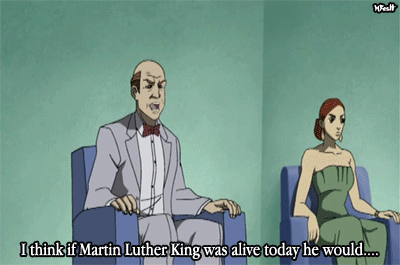Hey, content warning! I talk about some bad stuff in politics and people’s relationship to violence! Skip it if you don’t like the sound of that!
Time to time I talk about the work of Marshall Rosenberg, a psychologist and communicator who presented the idea of Nonviolent Communication. Nonviolent Communication, or NVC if you’re familiar with it, is a really interesting practice that seeks to decouple our current models of communication from the inherent violence and domination wrought in our culture.
I advocate for NVC as a practice pretty hard – if not directly for people to follow it, I often use it when talking to people about their needs and their wants, and I do recommend people investigate it to see how different the world can look when you start to dismantle the everyday assumptions about what is normal. When you start to see how much of our day to day conversations are about putting people in their place, it becomes easier to approach people with empathy, and to stop treating people like things.
Nonviolent Communication, however, is not pacifism.
The intention behind the protective use of force is to prevent injury, never to punish or to cause individuals to suffer, repent or change.
– Marshall Rosenberg
Starting a few years ago, I got to watch some people who generally, are pretty smart, twist themselves in knots in order to justify acts that looked like they should be ideologically opposed to. This is your ‘don’t make a fuss’ crowd of liberals, for example, people who could recognise there was a problem but being noisy or starting fires wasn’t going to solve it, because the enemy could be convinced with sufficient peaceful protest, they were certain. As Martin Luther King said,

Anyway. One example from a Catholic Pacifist Leftist, which, well, that’s a set of titles, was that Police were not people, and therefore, violence against them was acceptable. They had become an organ of the state when they assumed their uniform, but also, that meant police who were not identifying with the uniform were no longer valid targets for violence, which runs into complications when you remember how in 2020 there were police in unmarked vans kidnapping people and all that.
Now, myself, I am not aagainst the idea of violence. I think, in the common parlance, violence is something that is part of our world, and as long as we are in a machine of violence, violence may be the one of the only reliable tools we have to change it. To resist violence may be treated as violence.
But one thing I appreciate greatly, is that Marshall Rosenberg – who was Jewish, and faced antisemetic violence in his lifetime, and lived in the shadow of Nazism, didn’t use his communication theory to become the foundation to explain why other people shouldn’t use force, shouldn’t protect themselves. NVC is a communication method – it’s not a suicide pact.
The way Rosenberg framed it is that violence, as referred to in the title of NVC, is the exertion of power to dominate. This becomes very evident when you read or practice the method a little – you realise how much of it is built around always making conversations about places people can comfortably approach your needs rather than respond to your demands. But in these talks, he does underscore, that force is a thing, and force is something that can be used in the name of preventing violence. If you see someone about to injure someone else, the solution isn’t to listen to their needs – it’s to prevent the injury, and then, when you can get the offending party to listen to you, you can maybe use NVC to help address the problems that led to that.
You don’t need to twist yourself into ethical knots over this. You’re not Kant. Protecting people isn’t a moral ill, despite how many media works have painted a greased slippery slope of rocket skates.
Just come to understand what violence is, and what it’s for.